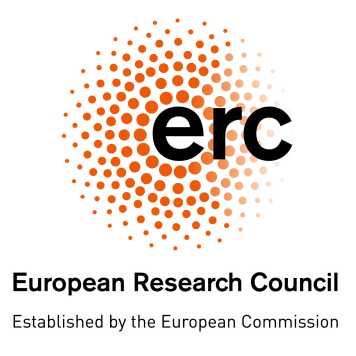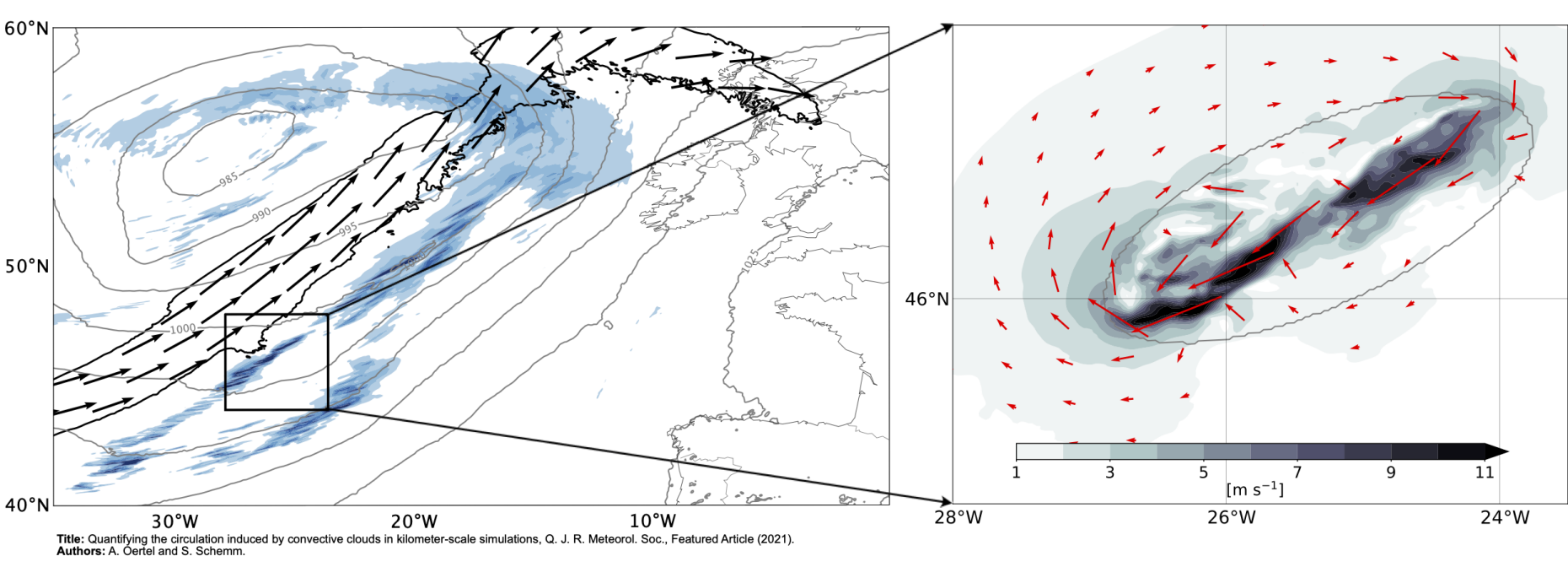High-resolution cloud-circulation interactions

The representation of the diabatic to adiabatic couplings in climate and weather models is one of the leading causes of uncertainty associated with projections of future changes in storm tracks, precipitation bands and weather extremes. At the same time, the representation of clouds and their interactions with the large-scale extratropical circulation is of vital importance for the quality of weather predictions. Based on convection-permitting simulation, we explore how cloud-related processes shape the large-scale atmospheric circulation using Lagrangian diagnostics.
In this ERC funded project, high-resolution modelling experiements and Lagrangian diagnostics, performed online during model integration, are teamed to improve the mechanistic understanding of how clouds affect large-scale circulation anomalies on time scales from weeks to seasons.
News
- Project publication #2: How to study the influence of clouds on the jet stream?
In this new publication, we leverage the GPU-enabled NWP model COSMO and online parcel trajectories to quantify how adiabatic and diabatic processes, such as cloud condensation or radiation, affect the jet stream. Jet stream dynamics is studies through the lense of potential vorticity gradients and the theory underlying the link between adiabatic and diabatic drivers of PV gradient changes along air-parcel trajectories is presented. The article is now published in the external page Quarterly Journal of the Royal Meteorology.
- Mona Bukenberger presented her first results on how cloud-related diabatic processes affect the circulation at the external page 2022 EMS Annual Meeting (EMS2022-276). [September 2022]
- Project publication #1: How to quantify the far-field circulation influence of clouds?
In our study, which is highlighted as a featured research article in the external page Quarterly Journal of the Royal Meteorology, we quantify the near and far-field circulation induced by clouds in kilometer-scale simulations.
For more details, see the publications section at the bottom of this page. [February 2021]
- Mona Bukenberger started her Ph.D. project on cloud-circulation interactions from a potential vorticity perspective. [December 2020]
- Following the air on GPU: A team of researchers led by Katherine Osterried (C2SM) and Stefan Rüdisühli participated in the external page CSCS GPU Hackathon with the COSMO online parcel trajectory module. They succesfully migrated the code to GPUs and thereby reduced the computation time on external page PizDaint by a factor of 30. This speed-up is an important prerequisite to enable high-resolution Lagrangian studies of, for example, cloud-circulation interactions. [November 2020]
- Stefan Rüdisühli joined part-time the ERC project while continuting to work part-time at C2SM.
Project-related publications
- Jet stream dynamics from a PV gradient perspective: The method and its application to a km-scale simulation by Bukenberger, M., Rüdisühli, S. and Schemm, S. (2023). Quarterly Journal of the Royal Meteorological Society. external page doi:10.1002/qj.4513.
- Quantifying the circulation induced by convective clouds in kilometer-scale simulations by A. Oertel and S. Schemm (2021). Quarterly Journal of the Royal Meteorological Society, Featured Research Article. external page doi:10.1002/qj.3992.
Clouds are not passively moved in the atmosphere by the wind. In contrast, clouds actively influence the flow field in their vicinity. In this study, the flow field generated by clouds ahead of an upper-level jet stream is quantified. It is shown that clouds can create a flow that is directed against the direction of the wind in which they grow. Hence, clouds propagate more slowly than a passive object, and they are more stationary. This can influence the regional cloud and precipitation distribution. The reconstruction of the wind field is based on the free-space Green's function and could be used as an alternative to potential voticity inversion in situation on the mesoscale where balanced flow assumptions are no longer valid.
